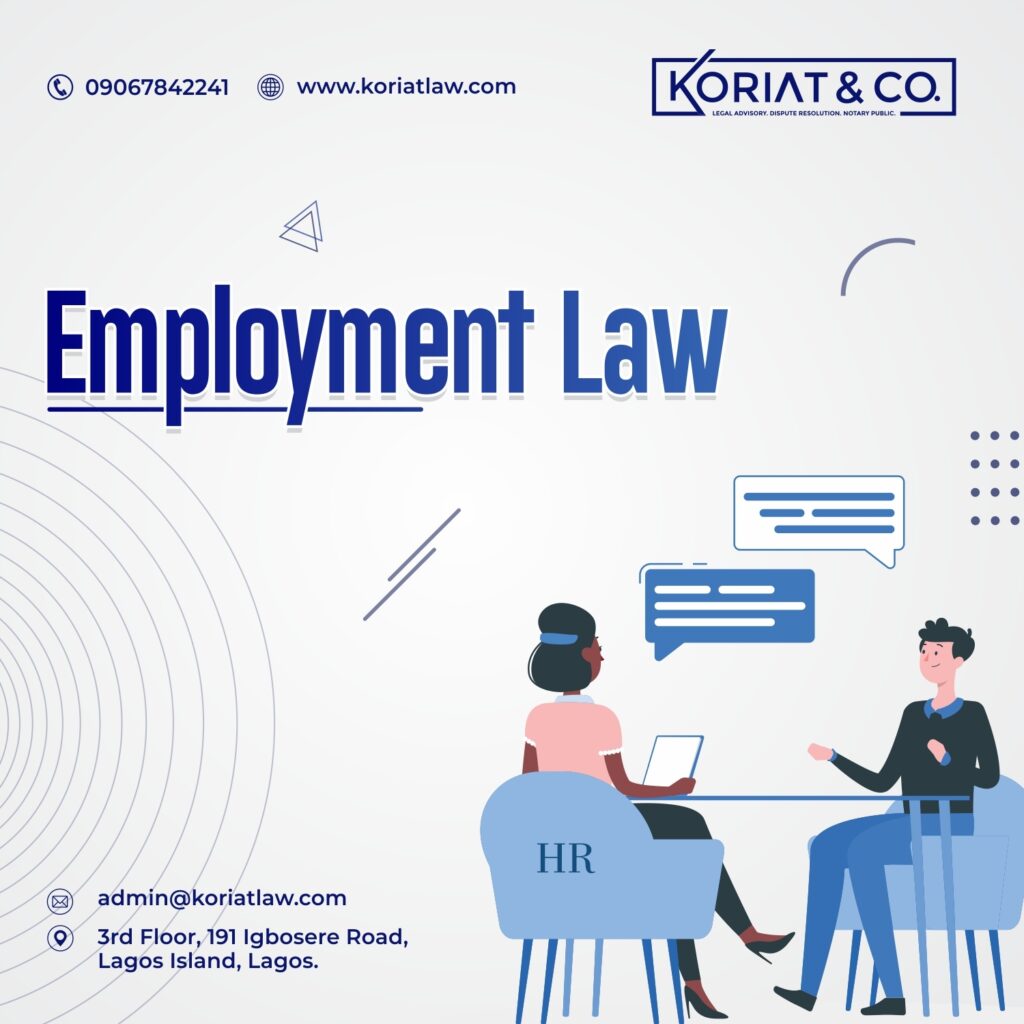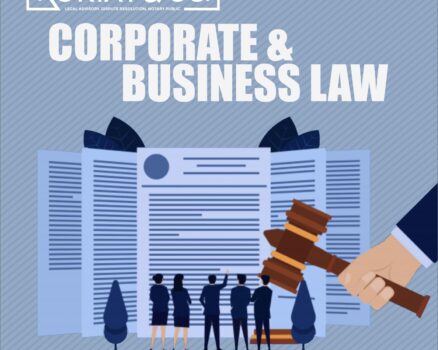
Introduction
Prosecuting employment cases in court is a special type of litigation. This is partly why a special court (i.e. the National Industrial Court of Nigeria) was set up by the law makers for that special purpose. A good understanding of the facts and law of employment relations will be critical to successful representation of either the employer or employee, as the case may be.
There are several mistakes that can be committed which may define the course of an employment litigation. However, the following five (5) mistakes are very notable:
1. VAGUE RELIEFS AND FAILURE TO SUPPORT SPECIAL DAMAGES WITH SUFFICIENT PLEADINGS AND EVIDENCE
Special damages are very technical and must be handled with care and diligence, starting from the couching the relevant reliefs to the factual outline in the pleadings and the presentation of evidence in the witness statement on oath. The law is well settled that any claims for salaries, allowances, reimbursements for expenses, gratuity, pension, severance or terminal benefits and entitlement are claims for monetary sums, which means that they are claims for special damages.
In 7UP Bottling Company Plc v. Augustus [2012] LPELR-20873(CA), the Court of Appeal held that the claims for gratuity, pension, housing fund and salary are all special damages and must therefore be strictly proved; and that each of the said items must be proved to the satisfaction of the Court as the Court is not entitled to make its own estimate of same. Special damages must be proved with credible evidence and without such proof no special damages can be awarded.
Also, the decision of the Supreme Court in NNPC v. Clifco Nigeria Ltd [2011] LPELR-2022(SC) is quite forceful in holding that a claim for special damages cannot succeed because it is admitted; this is because special damages can never be inferred from the nature of the act complained of. Special damages do not follow in the ordinary course as is the case with general damages. They are exceptional and so must be claimed specially and proved strictly.
The fact that special damages claims appear to be admitted does not relieve the party claiming it of the burden of proof with compelling evidence. Accordingly, it is unreasonable to consider a claim for special damages reasonable in the absence of proof. A claim for special damages succeeds on compelling evidence to justify it and not on the sums claimed appearing reasonable to the Court. See further Mr. Ignatius Anyanwu & ors v. Mr Aloysius Uzowuaka & ors [2009] LPELR-515(SC); [2009] 13 NWLR (Pt. 1159) 445 SC.
The common error of counsel is the inability to identify a special damage claim when one is being made and to make such special damages claims without the relevant factual pleadings and evidence to move the court to give a favourable judgment.
For instance, in NICN/ABJ/354/2017 Mr. Peter Enemona Adejo v. Arksego Nigeria Ltd. decided on 27th May 2020 by Honourable Justice Kado, the Relief (b) of the claimant was for an order directing the defendant to immediately calculate the claimant’s severance benefits and pay to the claimant without realizing that claim for severance benefits is claim for special damages which must be specifically pleaded and strictly proved. The claimant, from paragraph 5.17, 5.18, and 5.19 of the final written address, relied on deemed admission as a result of absence of pleading and evidence from the defendant to contradict his special damage claim. However, the law is settled beyond reproach that special damages must be specifically pleaded and specially proved by credible evidence and not by admission or in default.
In refusing the special damage claim, Justice Kado held as follows:
“There is nothing in the pleading and evidence before the court to establish entitlement to this head of claim. The claimant has not referred this court to the provisions of the contract of service that make him to be entitled to severance benefit and what amount he can claim, the failure of the claimant to supply the necessary facts that the court can look at to determine this claim is fatal to the claim. The claimant has not told this court which instrument grants him 7.5% of his salaries as severance benefit. The claimant in his contention in paragraph 5.23 of the final written address has admitted that the service agreement exhibit CW1A1-2, does not have provision for severance package. But he is relying Article 12 of ILO convention. The claimant had not as well told this court the amount that can be claimed as per Article of ILO Convention No. 158. With the state of evidence this court is not in a position to know the entitlement of the claim as to severance benefit. The court cannot speculate. In the absence of evidence as to quantum of severance benefit, the claimant has not proved his entitlement to Relief B, same is hereby dismissed.”
Even where a counsel has specifically pleaded the relevant facts and led evidence to the special damage claim, the reliefs must be clear and the amount claimed must be certain and not left for the court to surmise. The point was made by Justice Kado when he held further as follows:
“It is also to be noted that the way and manner relief B was couched shows that it is a vague and uncertain claim. The Claimant has not been particularized and ascertained quantum, of his Claim for the severance benefit. The Claimant has also not tendered any evidence as to what his entitlement is all about. The failure by the claimant to prove the quantum of his claim has deprived this court of the power to grant such claim, the claim is nebulous, indistinct and vague. The apex court has deprecated this type of claim and refused to grant it see University of jos v Ikegwuoka (2013) 9 NWLR (Pt.1360) 478, in that case the plaintiff had claimed an order directing the appellant to confirm his appointment as lecturer ii in the department of political science at University of Jos with effect from 27th January 1995 with all his promotions, allowances and entitlements, etc. the entire claim of the claimant was dismissed, on appeal, the Court of Appeal allowed the appeal. But on further appeal to Supreme Court, the appeal was allowed in part. However, the part of the claim relating to promotions, allowances and entitlement were adjudged not to have been satisfactorily proved and accordingly dismissed. The apex Court stated, thus:
‘’All the reliefs to promotions, allowances and entitlements being reliefs that are vague, uncertain and lacking in particulars and proof by evidence must fails there was no evidence of any promotion, allowances or entitlements inuring to the respondent which appellant is withholding from being exercised in the respondent’s favour by the appellant.’’
Justice Kado further held that “I must observe in regard to this matter that the Claimant has neither pleaded satisfactorily his special damages to wit; severance benefit as his entitlement. The law is well settled that unless pleaded specially and proved strictly, the court is not obliged to grant such claim or make any award in that regard for special damages. Relief B fails and same is hereby dismissed”.
2. CLAIMING GENERAL DAMAGES IN WRONGFUL TERMINATION CASES RELATING TO FAILURE TO GIVE TERMINATION NOTICE
General damages cannot be claimed where the gravamen of the claimant’s case is that the defendant terminated his employment without notice. Once contract of employment stipulates expressly that it is terminated by the giving of a stipulated period of notice, the damages recoverable for wrongful termination (relating to employer’s failure to give notice of termination) will be the amount of wages or salary the employee would have earned during the stipulated period. So, it is a grave error for lawyers to be seeking general damages in the circumstances. The case of Promasidor (Nig.) Ltd & anor v. Asikhia [2019] LPELR-46443(CA) is recommended.
For instance, in the case of NICN/ABJ/139/2018 between Mrs. Omotokunbo Abiodun Daria & 6 Ors. V. NIRSAL, the contract of employment provides for two weeks’ notice, damages was then held by Justice Kado to be two weeks’ salary or wage even though the claimant was asking the court for N15,000,000 damages. The claimants admitted being paid salary in lieu of termination notice, but rejected the payment and which in turn the defendant refused to accept, this means the claimants were still in possession of the payment of salary in lieu of notice. In the circumstances, Justice Kado thereby ordered the claimants to retain the payment of the salary in lieu of notice as what they were entitled to as damages for termination of their employment.
To buttress the point being made here, it is important to refer to two cases relied on by the claimants in the case of NICN/ABJ/139/2018 between Mrs. Omotokunbo Abiodun Daria & 6 Ors. V. NIRSAL which the counsel for the defendants reproduced and the Court adopted in its judgment.
The first is the case of FRANK GBOBOH V. BRITISH AIRWAYS PLC (2016) LPELR-40099(CA), wherein the Court of Appeal, (per Nimpar, JCA) succinctly held on the measure of damages recoverable for wrongful termination of employment, as follows:
“The measure of damages awarded when an employment is wrongfully terminated is also settled in law, the apex court in the case of OSISANYA V. AFRIBANK (NIG) PLC (SUPRA) held as follows: “There is, in my view, no doubt that the Court below correctly stated and applied the applicable principle of law in master/servant relationship.
………. The principles of law governing the award of damages were stated recently by this Court in:
i. WESTERN NIGERIA DEVELOPMENT CORPORATION V. JIMOH ABIMBOLA (1966) NMLR 381 at 382; and
ii. NIGERIA PRODUCE MARKETING BOARD V. A.I. ADEWUMI (1972) 1 ALL NLR (PT2) 433 at 437.
In the latter case, we stated the law as follows at page 437:-“in a claim for unlawful dismissal, the measure of damages is prima facie the amount that the plaintiff would have earned had the employment continued according to contract. Where, however, the defendant, on giving the prescribed notice, has a right to terminate the contract before the end of the term, the damages awarded apart from other entitlements, should be limited to the amount which would have been earned by the plaintiff over the period of Notice, bearing in mind that it is the duty of the plaintiff to minimize the damage which he sustains by the wrongful dismissal.”
Secondly, the Court of Appeal, (per Mbaba, JCA) in the case of AGBARAKWE V. UNIVERSITY PRESS PLC (2015) LPELR-25613 (CA), on how damages would be measured in a claim for wrongful dismissal, held as follows:
“It should also be appreciated that in employment matters and claims for wrongful dismissal, the measurement of damages is, prima facie, the amount that the plaintiff would have earned, had the employment continued according to contract. See NMB Vs. Adewumni (1972) 11 SC N1; Beckham Vs. Darke (1849) 2 HCC 579. Where however, the defendant, on giving the prescribed notice, has a right to terminate the contract, before the end of the term (in respect of term contract), the damages awardable (apart from the entitlements earlier stated) should be limited to the amount which would have been earned by the plaintiff over the period of notice, bearing in mind that it is the duty of the plaintiff to minimize the damage which he sustains by the wrongful dismissal. See Denmark Production Ltd Vs. Boscobel Productions Ltd (1968) 1ALL ER 513 at 524. See also SELCON Tannery Ltd Vs. Abubakar & Ors. (2013) LPELR – 21412. In the case of New Nigeria News-papers Ltd Vs. Atoyebi (2013) LPELR – 21489 (CA), it was held: ‘That award of general damages for wrongful dismissal (or wrongful termination) is strange. This is because what is computed for a successful party in such circumstances cannot be general damages, but proven special damages, which actually are the salaries and other entitlements of the plaintiff during the period of the purported termination or dismissal, or what would have accrued to him, had the dismissal or termination complied with the due process envisaged in the condition of service, that is, the entitlement payable to the plaintiff in lieu of notice (where re-instatement cannot be ordered). See AdeniranVs. NEPA (2002) 14 NWLR (Pt. 786) 30; Kwara State Polytechnic Vs. Sahu (supra); SPDC Ltd Vs. Olarewaju (2008) 123 SC (pt. 111) 27.”
It must be mentioned, however, that where there are claims of unfair labour practices, the court may award more damages than the amount representing the notice period. In British Airways v. Makanjuola [1993] 8 NWLR (Pt. 311) 276, the Court of Appeal held that the quantum of damages recoverable by an employee depends on whether the wrongful termination of employment was as a result of the failure to give the required notice or as a result of an alleged malpractice (awarding two years salary in the process for an unproven malpractice), whilst Promasidor (Nig.) Ltd & anor v. Asikhia [2019] LPELR-46443(CA) has now made a total distinction between damages for wrongful termination where no notice is given, and damages for an alleged malpractice such as injurious falsehood, relying heavily on the maxim, ubi jus, ibi remedium (where there is right there is a remedy) and affirming the award of N2.5 Million as damages.
In NICN/LA/276/2014 Emana Ibor Edet v. Fidelity Bank Plc decided by Kanyip J. on 17th December 2019, Exhibit C3 puts the claimant’s annual salary at N3,378,375.00. The Court was inclined to granting two years’ salary to the claimant as damages in terms of reliefs (7) and (8), i.e. the claim for damages for the unauthorized debiting of the claimant’s account and the deprivation of access of the claimant to his account in addition to all that was awarded in favour of the claimant. In consequence, the court awarded against the defendant in favor of the claimant as general damages the sum of N6,756,750.00.
Please note that at the time of filing a case at the registry of the court, the filing costs payable by the claimant will be assessed by the court’s registrars based on the amount of damages claimed in the claimant’s Complaint and Statement of Facts. It is therefore a costly error for a lawyer to make a bogus claim for special damages (which will attract high filing cost to an indigent claimant) that will eventually fail for lack of either pleadings or evidence or both.
3. NOT KNOWING WHAT AND HOW TO PLEAD OR WHEN AND HOW TO GIVE NOTICE TO PRODUCE DOCUMENTS NECESSARY FOR A CASE TO SUCCEED
This is very tricky and requires a lot of experience as well as research. What a lawyer must plead will depend on the facts that are relevant to the case, the claims to be made and the state of the law. Also, certain facts are required by law to be specifically pleaded and proved before a claim can succeed. Generally, for example, facts relating to breach of international best practices, commission of unfair labour practices, acts of witch-hunt, harassment, discrimination, victimization, threats, malice or bias, fraud, misrepresentation, duress, withholding or denial of any benefits, whether monetary or otherwise, including fair hearing, etc. must be pleaded and proven by evidence.
Where documents mentioned or sought to be relied on by a claimant are not available to him before filing a case, but in the possession of the defendant, the claimant is required to issue notice to produce to the defendant in line with Section 91 of the Evidence Act 2011 and Order 28 of the National Industrial Court (Civil Procedure) Rules 2017. Failure to give such notice is fatal to the case if the success of the case depends on the content of the said documents.
Section 91 of the Evidence Act 2011 states as follows –
“Secondary evidence of the contents of the documents referred to in section 89(a) shall not be given unless the party proposing to give such secondary evidence has previously given to the party in whose possession or power the document is, onto a legal practitioner employed by such party, such notice to produce it as is prescribed by law; and if no notice to produce is prescribed by law then such notice as the court considers reasonable in the circumstances of the case.”
Order 28 of the 2017 Rules provides as follows:
“Where a party to a suit desires any other party to the suit to produce in Court at the trial, a document or any other thing, which the first party believes to be in the possession or power of that other party, the first party shall give “Notice to Produce” in Form 35 to that other party. The Notice shall be given and served not less than five (5) days before the date slated for the trial.”
By Order 29 of the 2017 Rules, a “Notice to Produce” may be included in the pleadings of the party seeking the production of the document or thing or be in a separate notice delivered to the other party or counsel to the other party. The easier and cheaper way, in our view, is to include a notice to produce in the pleadings by inserting a paragraph in the pleading that says “the claimant hereby gives the defendant notice to produce the (original of) following documents ……” and then go ahead to list out all the documents needed to be produced.
Please note that a defendant is not bound to produce the documents in respect of which a notice to produce has been given. The only implication of a defendant’s failure to produce is that the court may draw an inference that such documents may be unfavourable to the defendant’s case. In appropriate cases, failure to produce the required documents does not excuse the claimant from his evidential burden to prove his case.
4. FAILURE TO PROPERLY CITE JUDICIAL AUTHORITIES AND SUBMIT CERTIFIED TRUE COPIES OF UNREPORTED JUDGMENTS
Judicial precedents are relevant in determination of employment cases. So, in urging a court to rely on a relevant judicial authority, it is fundamental for counsel to give proper citation of the said authority for the judge’s easy reference. Where unreported cases are cited, counsel is required by law to provide a certified true copy of the unreported judgment. It is a great disservice to a client and lawyer’s reputation to given an incomplete citation. To give a false citation may be unprofessional conduct, particularly if the court is of the view that such false citation was deliberately given to mislead the court and occasion injustice.
In NICN/LA/276/2014 Emana Ibor Edet v. Fidelity Bank Plc decided on 17th December 2019 by Honourable Justice B. B. Kanyip, the Court observed as follows:
“I carefully considered the processes filed and the submissions of the parties. I must point out that especially the claimant’s final written address was littered with unreported cases, the certified true copies of which were not sent to the Court contrary to Order 45 Rule 3(1) of the NICN Rules 2017. Counsel must note that by Order 45 Rule 3(2) of the NICN Rules 2017, failure to comply with Rules 2 and 3(1) of Order 45 may render the written address incompetent”.
And by Major General Kayode Oni (Rtd) & 4 ors v. Governor of Ekiti State & anor unreported Suit No. SC.622/2015, the judgment of which was delivered on 18th January 2019, per Augie, JSC held as follows:
“It is an elementary principle, very elementary, that Counsel who want the Court to make use of authorities cited in Court must provide the name of Parties, the year the case was decided, and where the case is reported, name of the Law Report, the year, volume and page must be cited. But if the said case is unreported, Counsel must provide the Court with a certified true copy of the Judgment sought to be relied upon – see Chidoka & anor v. First City Finance Co. Ltd [2013] 5 NWLR (Pt. 1344) 144 and Ugo-Ngadi v. FRN [2018] LPELR-43903(SC)…”
The hallmark of legal scholarship and advocacy is that for every proposition or submission made by counsel in a pending litigation, there is a need to substantiate with verifiable authority. Where counsel chooses, therefore, to refer to authorities that cannot be verified, the authorities must be denounced by the court.
In a case decided by Justice Kanyip, his lordship has the following to say:
“Here I have in mind the submission of counsel to the claimant/applicant to the effect that the Supreme Court position in Abdu Mohammed v. State [1991] 5 NWLR (Pt. 192) 439 particularly at 456 was even recently supported by the popular case of Dominic Strauss-Khan (immediate past CEO of the IMF). That the prosecution in that case placed all materials at the disposal of the court and defence counsel which eventually led to the acquittal of the accused. Not only is the submission of counsel not verifiable, it calls to question whether a Supreme Court decision in Nigeria requires external support in order for it to be binding on lower courts. I do not think so.”
Failure to submit certified true copy of unreported judgments cited by counsel means the court is at liberty to discountenance the cited cases, no matter how relevant or helpful they may be to the party’s case. It is a lazy attitude and show of incompetence for a lawyer to refer a judge to a decided case without adding the full citation.
It is noteworthy that the National Industrial Court judges have been very hardworking and liberal in allowing lawyers to state the online link to a decided case which may have been reported online. This should not excuse a lawyer from ensuring that a copy of the certified true copy is obtained from the registry of court and forwarded to the judge presiding over a matter in which an unreported case has been cited.
5. INELEGANT DRAFTING OF COURT PROCESS
Drafting is part of the necessary skills of an employment litigation lawyer, especially now that almost all the rules of court permit or require lawyers to frontload their court process with little emphasis on oral advocacy. It is a grave error if an employment litigation lawyer is either nonchalant in his drafting or not persuasive in his or her court process. Certainly, an inelegantly drafted court process cannot achieve much in terms of persuading the presiding judge.
It is important to note that the presiding judge is not a party to the dispute and may, therefore, not have heard all the small details of the transaction or affairs of the parties which culminated in the litigation. Therefore, the court process drafted by a lawyer must be succinct and complete to make a meaningful impression on the mind of the judge. The document must be self-sufficient to answer whatever questions the judge may raise in his mind even when the parties and their lawyers are not there.
If a lawyer fails to appreciate how important the pleadings or other drafted court process is, then such document is bound to be poorly produced. In Suit No. NICN/ABJ/29/2018 Rahman Adewale vs. Leisure Investment Ltd. decided by Justice Sanusi Kado on 29th May 2020, the Court made the following observations:
“The pleading of the Claimant was riddled with typographical errors. This calls for more circumspection on part of counsel. This is because pleading is the backbone and foundation of any action instituted before the court. any mistake in drafting of leading may be very costly, as the errors may mar or inhibit securing of appropriate reliefs.”




